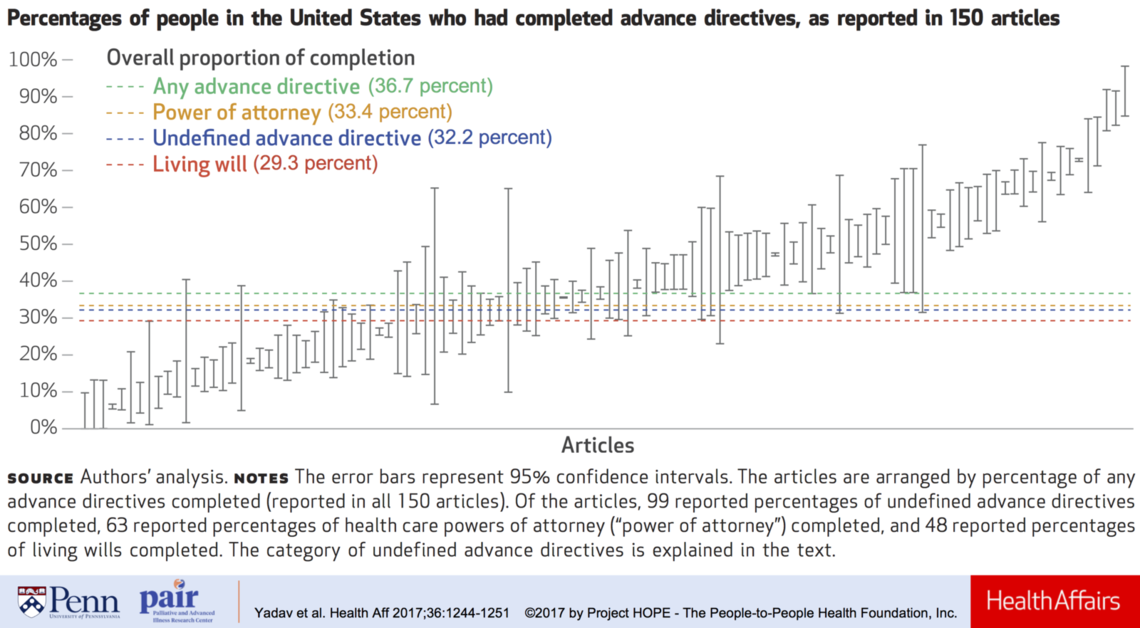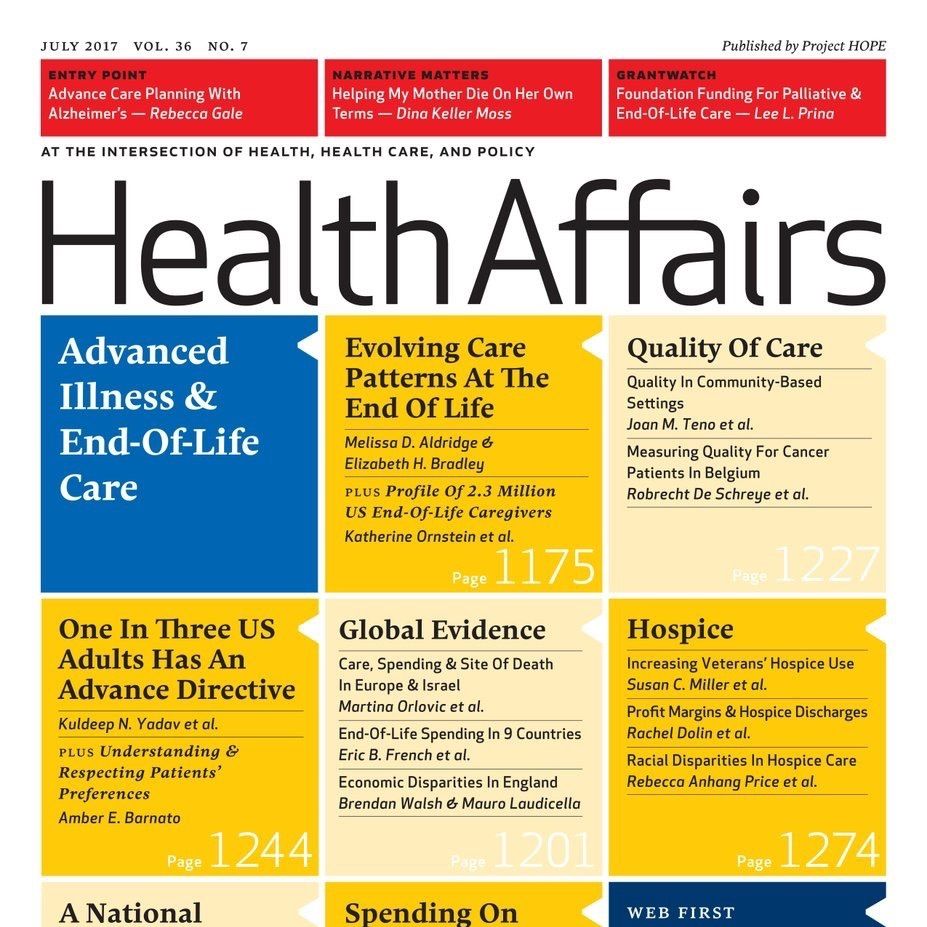Prevalence of Advance Directives in the United...

Advance directives are the primary tool for people to use in communicating their wishes for end-of-life care in the event of incapacity. However, data regarding the completion of advance directives in the United States are inconsistent and of variable quality. We systematically searched six databases (PubMed, Embase, CINAHL, Scopus, Web of Science, and ProQuest) and reviewed refereed studies published between 2011 to 2016 to determine the proportion of U.S. adults with a completed advance directive, including a living will and/or health care power of attorney. Our primary outcome of "any advance directive" was categorized into "living will," "health care power of attorney," and "advance directive-undefined." The latter category included studies that reported a combined completion rate for living wills and health care powers of attorney or did not specify the type of advance directive. When more than one category was reported without mutual exclusivity, we included the largest proportion in our computation of “any advance directive,” acknowledging that either a living will or a health care power of attorney is considered an advance directive. Owing to the heterogeneity across studies, we conducted random-effects meta-analyses to determine the overall completion proportions for all four outcomes as well as “any advance directive” completion proportions by subgroups.
Sponsors
-
Otto Haas Charitable Trust






